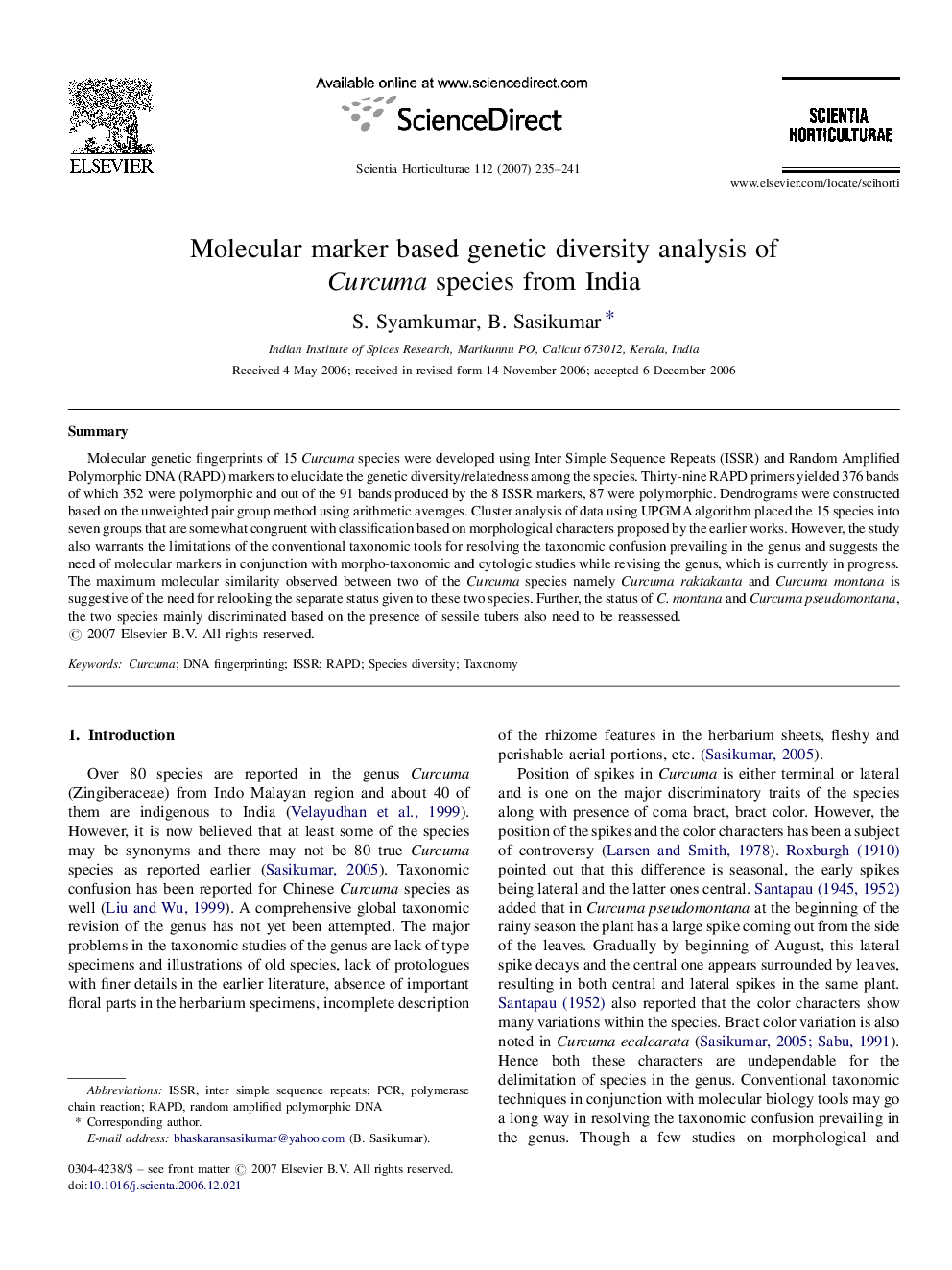| Article ID | Journal | Published Year | Pages | File Type |
|---|---|---|---|---|
| 4569852 | Scientia Horticulturae | 2007 | 7 Pages |
SummaryMolecular genetic fingerprints of 15 Curcuma species were developed using Inter Simple Sequence Repeats (ISSR) and Random Amplified Polymorphic DNA (RAPD) markers to elucidate the genetic diversity/relatedness among the species. Thirty-nine RAPD primers yielded 376 bands of which 352 were polymorphic and out of the 91 bands produced by the 8 ISSR markers, 87 were polymorphic. Dendrograms were constructed based on the unweighted pair group method using arithmetic averages. Cluster analysis of data using UPGMA algorithm placed the 15 species into seven groups that are somewhat congruent with classification based on morphological characters proposed by the earlier works. However, the study also warrants the limitations of the conventional taxonomic tools for resolving the taxonomic confusion prevailing in the genus and suggests the need of molecular markers in conjunction with morpho-taxonomic and cytologic studies while revising the genus, which is currently in progress. The maximum molecular similarity observed between two of the Curcuma species namely Curcuma raktakanta and Curcuma montana is suggestive of the need for relooking the separate status given to these two species. Further, the status of C. montana and Curcuma pseudomontana, the two species mainly discriminated based on the presence of sessile tubers also need to be reassessed.
